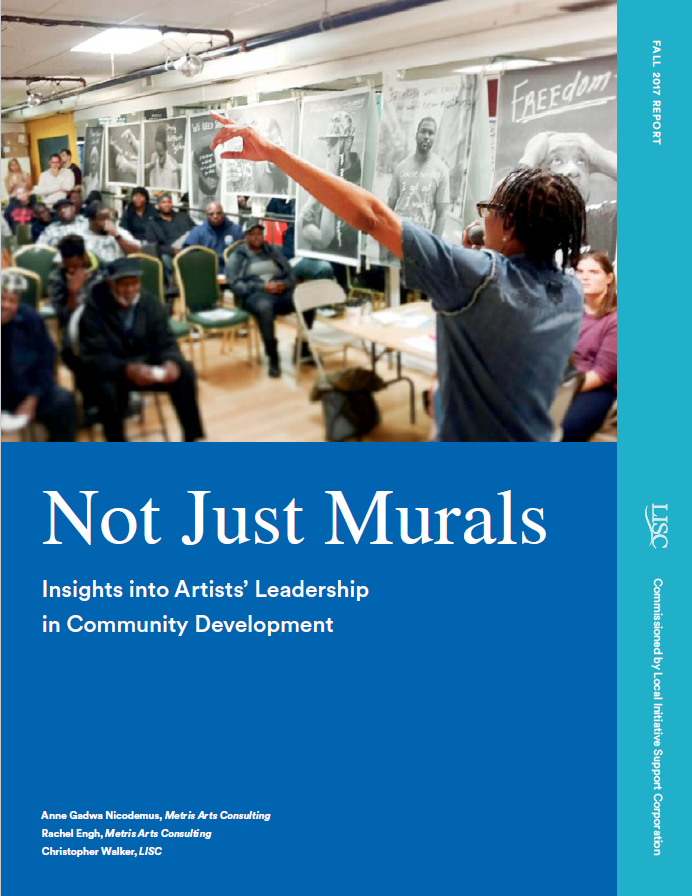Not Just Murals
Artists can have a profound impact on communities. The latest report from LISC’s Creative Placemaking team dives into the effect artists can have as leaders in their community. The report examines the nurturing of artists to be leaders, the challenges and opportunities they face, and profiles the work of many artists across the country.
Insights into Artists’ Leadership in Community Development
Many community developers see the role of artists in fairly limited ways: they paint murals, or they work in youth development. But artists can contribute much more profoundly, especially if they are given the authority to act in leadership roles.
Across the country, artists are running programs that are designed to build relationships and a sense of community among neighbors, reshape key locations in a neighborhood, or bring jobs and investment to a community. At the Local Initiatives Support Corporation, staff have seen an uneven understanding across our network of local offices, among community partners, and in the larger field of community development of how artists can exercise leadership in community development and how that leadership might be cultivated and nurtured. Understanding and acting upon this opportunity can help community developers do their jobs better.
Aiming to support arts-and-cultural approaches to community revitalization in the low-income neighborhoods and rural areas where we work, LISC adopted creative placemaking as a national initiative in the fall of 2015. LISC chose to pursue this approach because it believes that creative placemaking, understood as “people coming together to make positive physical, economic, and social impacts in their neighborhood through art, culture, and creativity,” can help local partners better achieve their community development goals. This initiative embraces certain core principles, such as social, economic, and cultural equity, that can and should be advanced through a creative placemaking approach, as well as the principle to put individual artists at the center of the work.
We draw on a literature review, interviews with 15 artists leading in different facets of community development, and conversations with experts who have unique insights into regional and national context and trends. Our interviews and examples draw heavily from two locales in the LISC network that are exceptionally fertile ground for artists taking up the mantle of leadership in community development, Minnesota’s Twin Cities and Philadelphia, as well as several projects and artists in the South that have received support from Alternate ROOTS, a regional arts service organization that provides artist leaders with training and resources at the intersection of arts and social justice. Read the full report [+]...
